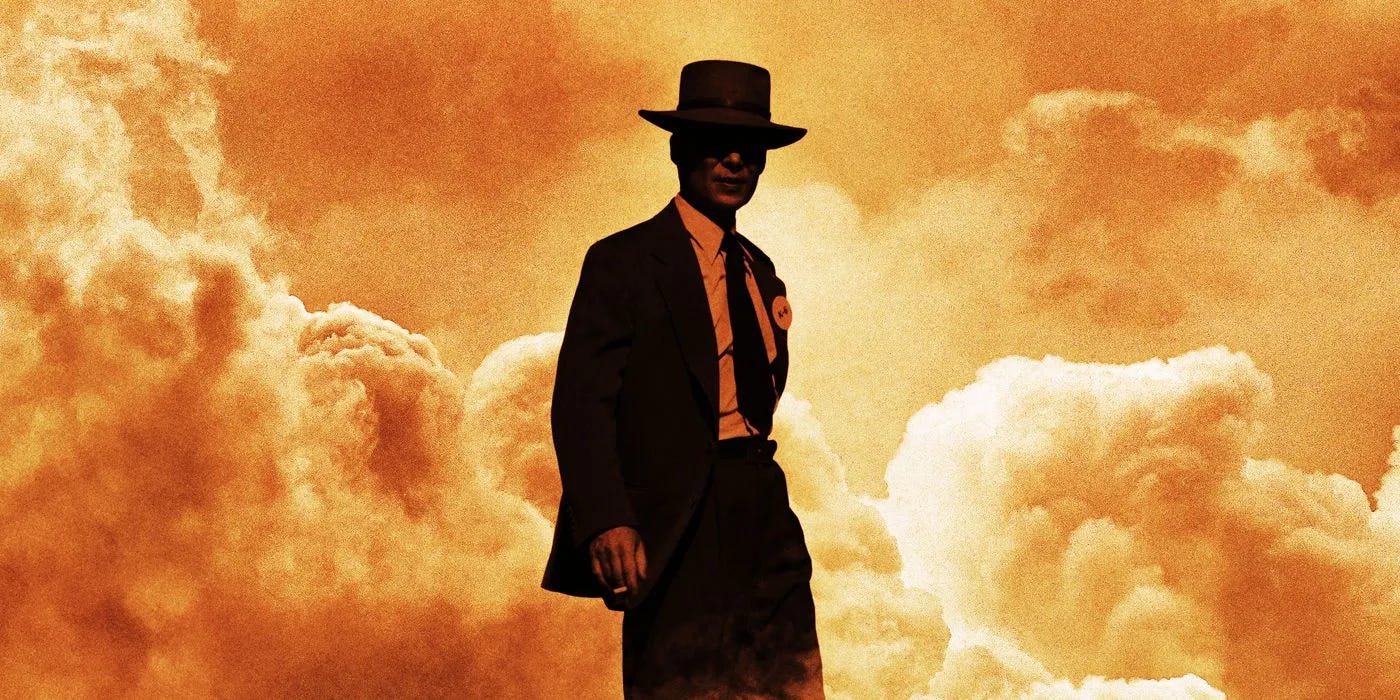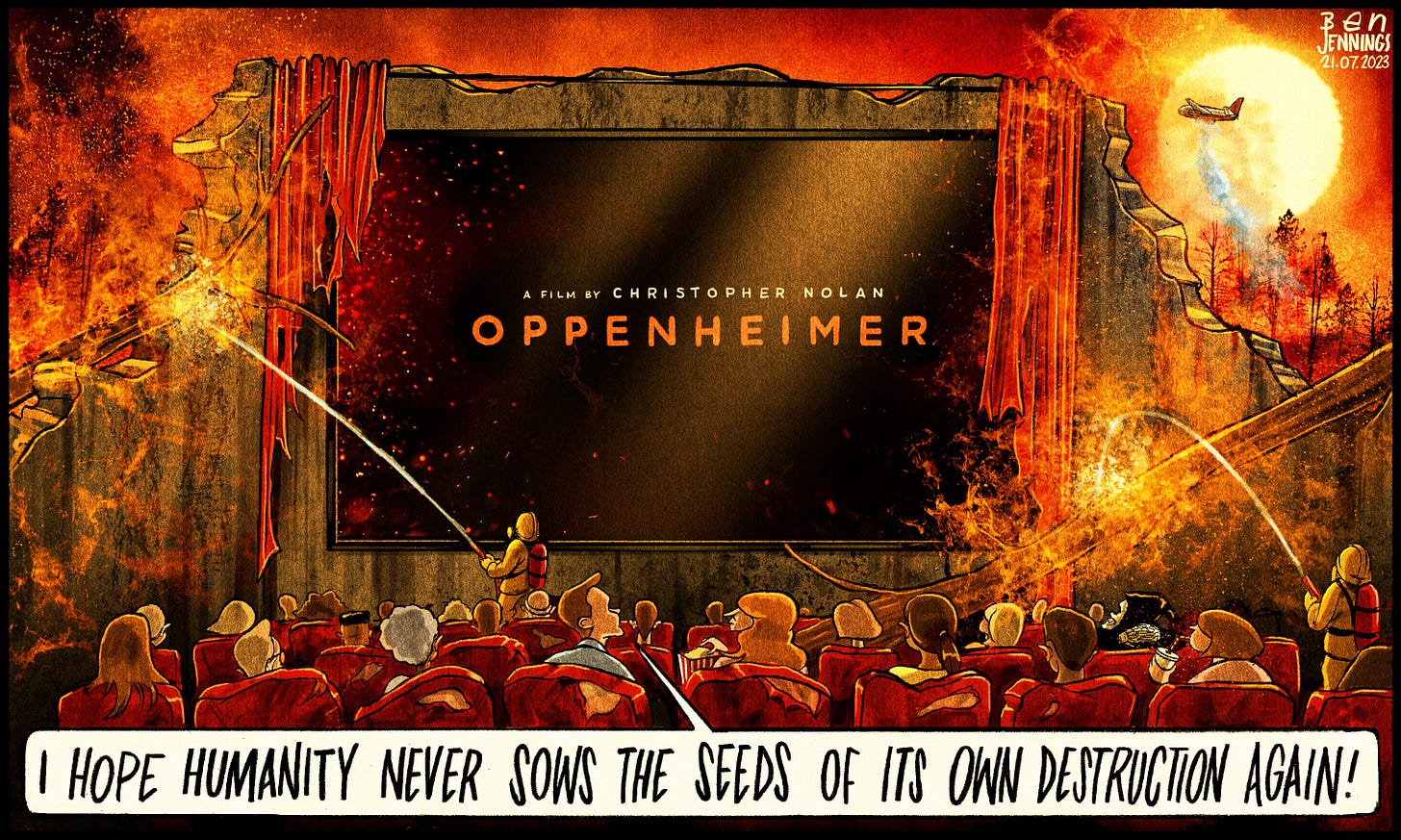Reprinted with permission from Greg Mitchell’s newsletter Oppenheimer: From Hiroshima to Hollywood.

Oppenheimer finally arrives as a streamer (and for purchase with extras) tomorrow, see my post here that previewed the bonus material. You still won’t see any Japanese victims of the atomic bombings but you already expected that. What is surprising is that two leading publications, in what seem to be unrelated moves, are taking this moment to issue strong messages about new nuclear threats today and in the future.
Just last week, I posted here a dire warning from a special issue of the venerable Scientific American: “The U.S. is beginning an ambitious, controversial reinvention of its nuclear arsenal. The project comes with incalculable costs and unfathomable risks.”
This past weekend an editorial in The Washington Post struck a similar theme, though with China highlighted. This arrives on 40th anniversary of the airing of the movie The Day After which drew the largest audience for a film in TV history and set off a kind of nuclear panic – that is, among policymakers makers who feared that the antinuclear movement of the day would gain new momentum (at Nuclear Times, which I edited, we had produced the first cover story).
Anyway, here is an excerpt from the Post editorial. Note: My award-winning PBS film Atomic Cover-up is now available for watching at their site for free, 27 minutes. And companion book here. You can still subscribe to this newsletter for free.
Washington Post, November 19.
The world is entering a dangerous nuclear arms race unlike anything since the first atomic bomb, but it does not have to end in catastrophe. Treaties controlling nuclear arms – verifiable and binding, to limit or reduce stockpiles and prevent miscalculation or error – can lead to more stability. They require political will from leaders of the United States, Russia and China that does not exist today.
The new factor is China, which aspires to roughly match the nuclear arsenals of the United States and Russia over the next decade or so. If the first arms race led to two-way bargaining – often with the strategic maneuvering of chess – the new one will be three-way and excruciatingly difficult. The concept of cocked-pistols deterrence – maintaining a credible nuclear threat to keep others from attacking – will be even more unpredictable and scary than during the Cold War.
Why does it matter? Nuclear weapons can destroy societies; as we’ve noted before, nuclear fire is more powerful by a factor of 10 million to 100 million than chemical fire in conventional explosives. While a nuclear weapon has not been used in combat since World War II, there have been significant risks: At least eight nuclear-armed nations have carried out 2,056 nuclear weapons tests underground and in the air, as well as dozens of false alarms and close calls. The danger of misunderstanding or miscalculation grows when nuclear weapons are kept on launch-ready alert, as they are by the United States and Russia today. Moreover, Russia has repeatedly threatened to use nuclear weapons during its war against Ukraine, showing how, even when nuclear weapons are not used, they can play an outsize role in coercion and conflict.
The new arms race is already underway. The congressional Commission on the Strategic Posture of the United States recently concluded, “China is pursuing a nuclear force build-up on a scale and pace unseen since the U.S.-Soviet nuclear arms race that ended in the late 1980s.” China, which a few years ago had about 200 nuclear warheads, now is believed to have more than 500 and to be aiming for more than 1,000 by 2030, compared to the 1,550 deployed warheads of the United States and Russia….
Diplomacy halted a nuclear arms race in the 1980s, largely because two political leaders, Ronald Reagan and Mikhail Gorbachev, had the vision to do so. Right now, such willpower is in short supply. But it would be wise to look for modest opportunities to prepare for treaties later on. An unbridled arms race will be costly, risky and even more mind-bending than three-way negotiations to stop it.

Thanks for reading Oppenheimer and the Legacy of His Bomb ! Subscribe for free to receive new posts and support my work.
Greg Mitchell is the author of a dozen books, including “Hiroshima in America,” and the recent award-winning The Beginning or the End: How Hollywood – and America – Learned to Stop Worrying and Love the Bomb, and has directed three documentary films since 2021, including two for PBS (plus award-winning “Atomic Cover-up”). He has written widely about the atomic bomb and atomic bombings, and their aftermath, for over forty years. He writes often at Oppenheimer: From Hiroshima to Hollywood.




I have nothing NEW to add. (!)
I will look forward to seeing this…
The applause was thunderous. :-)